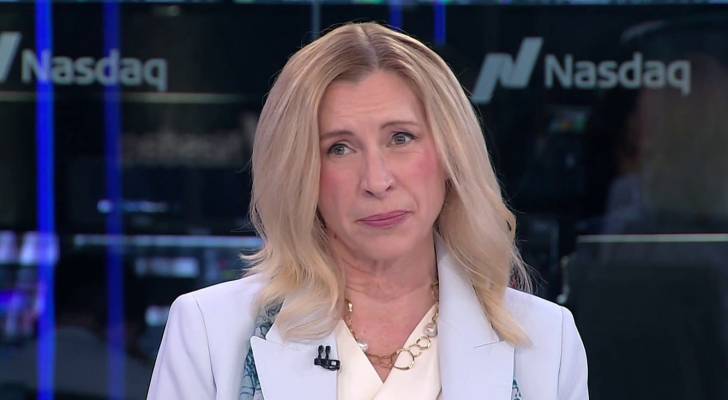Are US taxpayers getting ‘DOGE dividend’ checks? What we know about the idea floated by Trump and Musk — and if we do get them, why they might only cover a fraction of the cost of tariffs


Back in February, James Fishback, founder and CEO of investment firm Azoria, proposed the idea of a “DOGE dividend” on social media. It was an idea that caught the attention of Elon Musk. “American taxpayers deserve a ‘DOGE Dividend’: 20% the money that DOGE saves should be sent back to hard-working Americans as a tax […]
‘A slow bleed of support’: This economic expert is warning a ‘large number of foreign investors’ are ‘worried’ about investing in America — why she says they’re losing faith in the US


U.S. stocks had been outperforming the rest of the world for years — until a slew of tariffs and trade policies spooked investors and caused global markets to plunge in March. Now, some foreign investors are rethinking their exposure to U.S. markets. That’s according to economic expert Rebecca Patterson, who previously served as Bridgewater’s chief […]
OIder Americans got fleeced online last year, FBI says, losing an average $83,000 to scams. Here’s how to learn from their mistakes
Being robbed doesn’t always happen at gunpoint. Cybercriminals can sneak into your home through your computer and your phone — and may make you an unwitting accomplice to your own robbery. It’s a problem for everyone, but if you’re over 60, you’re particularly vulnerable. Last year, losses to cybercrime increased 33% from 2023 to a […]
‘Trash that is passed as news’: Donald Trump orders funding halt for ‘biased’ PBS, NPR — and even took a swipe at Sesame Street. How this could hurt communities across the US


A new executive order signed by President Donald Trump calls for an immediate halt to federal funding of NPR and PBS, citing what he calls “biased and partisan news coverage.” A statement from the White House called the outlets “biased” with “trash that is passed as news.” The order directs the Corporation for Public Broadcasting […]
My 83-year-old mother pays her rent on time, but she’s a hoarder — her place is crammed with old newspapers and other garbage. If the condo board finds out, can her housing be taken away?


Laura’s 83-year-old mother is still sharp, stays active and pays her bills on time. But Laura no longer visits because her mother doesn’t want to host anyone in her “messy” condo. The problem is, it’s more than a mess; her mom is a hoarder. Don’t miss I’m 49 years old and have nothing saved for […]
Americans of all ages are suddenly cooling on Florida — and this 1 hot spot has been hit the hardest. 3 reasons this once trendy city is seeing ‘the biggest slowdown’ in new residents


Florida has long been a magnet for Americans looking for a better life. Low taxes, affordable housing, a low cost of living and pleasant winter weather have made it a popular move — and not just for retirees. Young people seeking economic opportunities have come in search of jobs in technology, health care and tourism […]
Americans could see price hikes across the country thanks to Trump’s trade war — so don’t get caught napping. Here are 5 ‘everyday items’ to load up on before they become more expensive


American consumers can expect to see higher prices for goods made in China — and maybe even empty shelves. After President Donald Trump’s “reciprocal” tariffs were announced on April 2, markets took a nosedive. A 145% tariff on Chinese goods effectively blocked trade and resulted in a slowdown at ports. The CEOs of major retailers, […]
I’m 35 and sunk $95,000 into the S&P 500 in February — then lost $15,000 in the sell-off. My financial advisor wants me to ride it out, but how long should I have to wait?


Mark was nervous about taking the leap and investing in the stock market. As a 35-year-old health-care worker, he’d never had time to learn about the market — but with a lot of money sitting in the bank, he felt it was time to get some professional help and start making his money work for […]
Panicked Americans are claiming Social Security early for fear of Trump slashing benefits and ‘chaos’ at the agency disrupting services


There’s been a spike in claims for Social Security — and fear may be one of the reasons why. Don’t miss I’m 49 years old and have nothing saved for retirement — what should I do? Don’t panic. Here are 5 of the easiest ways you can catch up (and fast) Gain potential quarterly income […]
‘Liberating these buildings from its dark past’: Developers spent $64 million turning this Virginia prison — originally commissioned by Theodore Roosevelt — into a 165-unit apartment complex


Would you choose to live in a prison? You might — if it had been converted into a community of well-designed apartments with a club house, swimming pool, green spaces, restaurants, retail shops and even a preschool. That’s exactly what was done to an old prison in Lorton, Virginia. Don’t miss I’m 49 years old […]